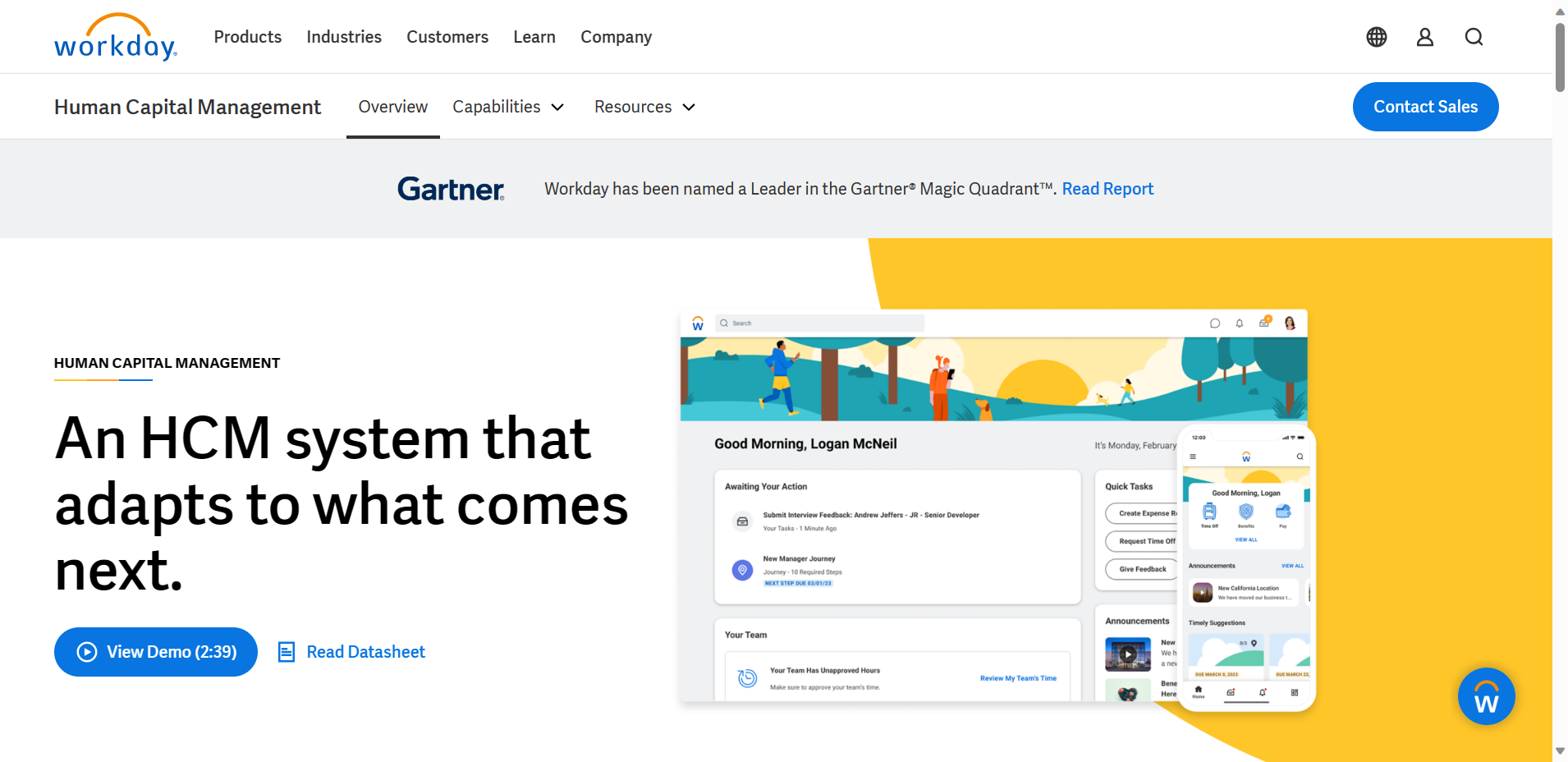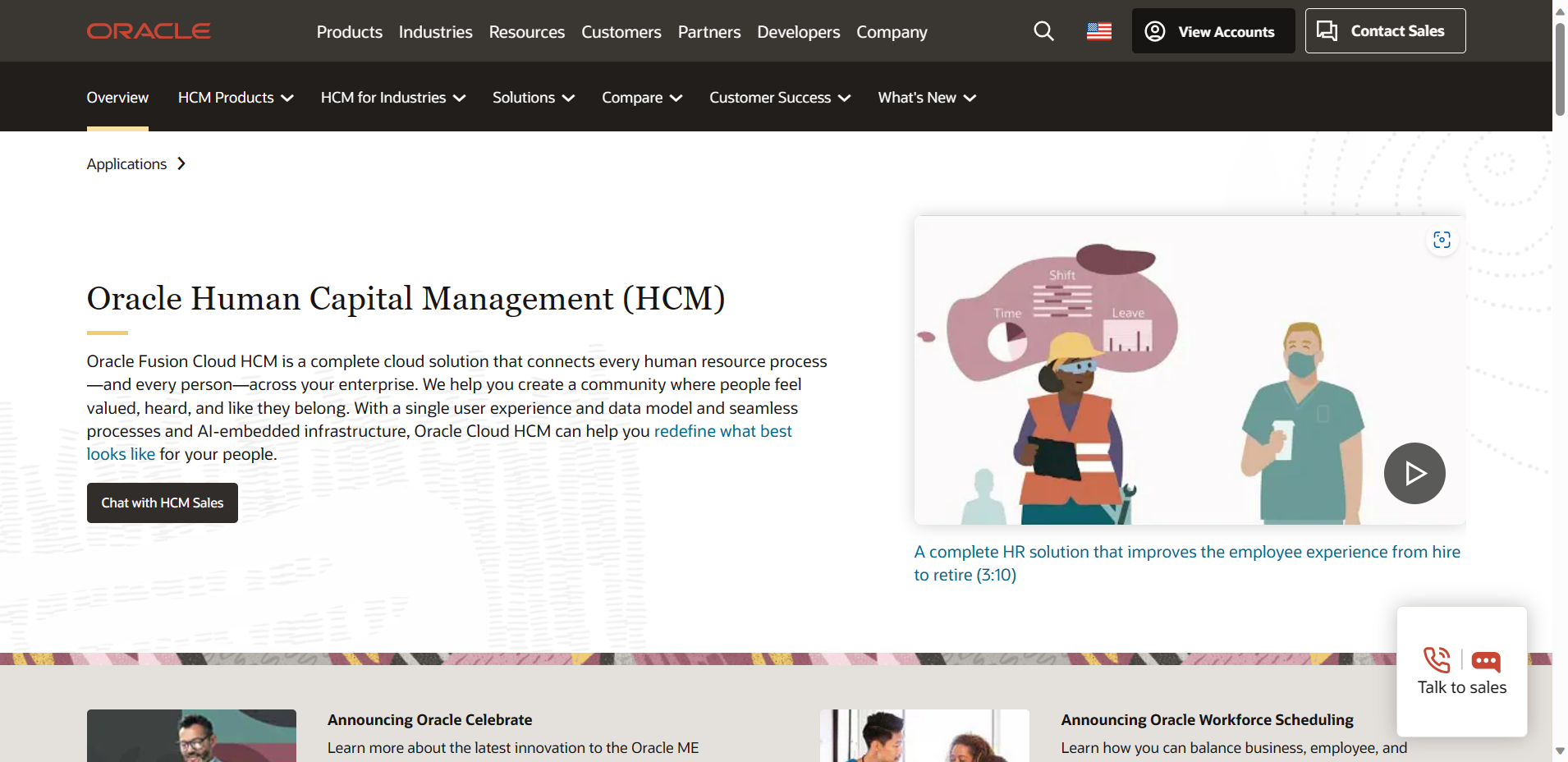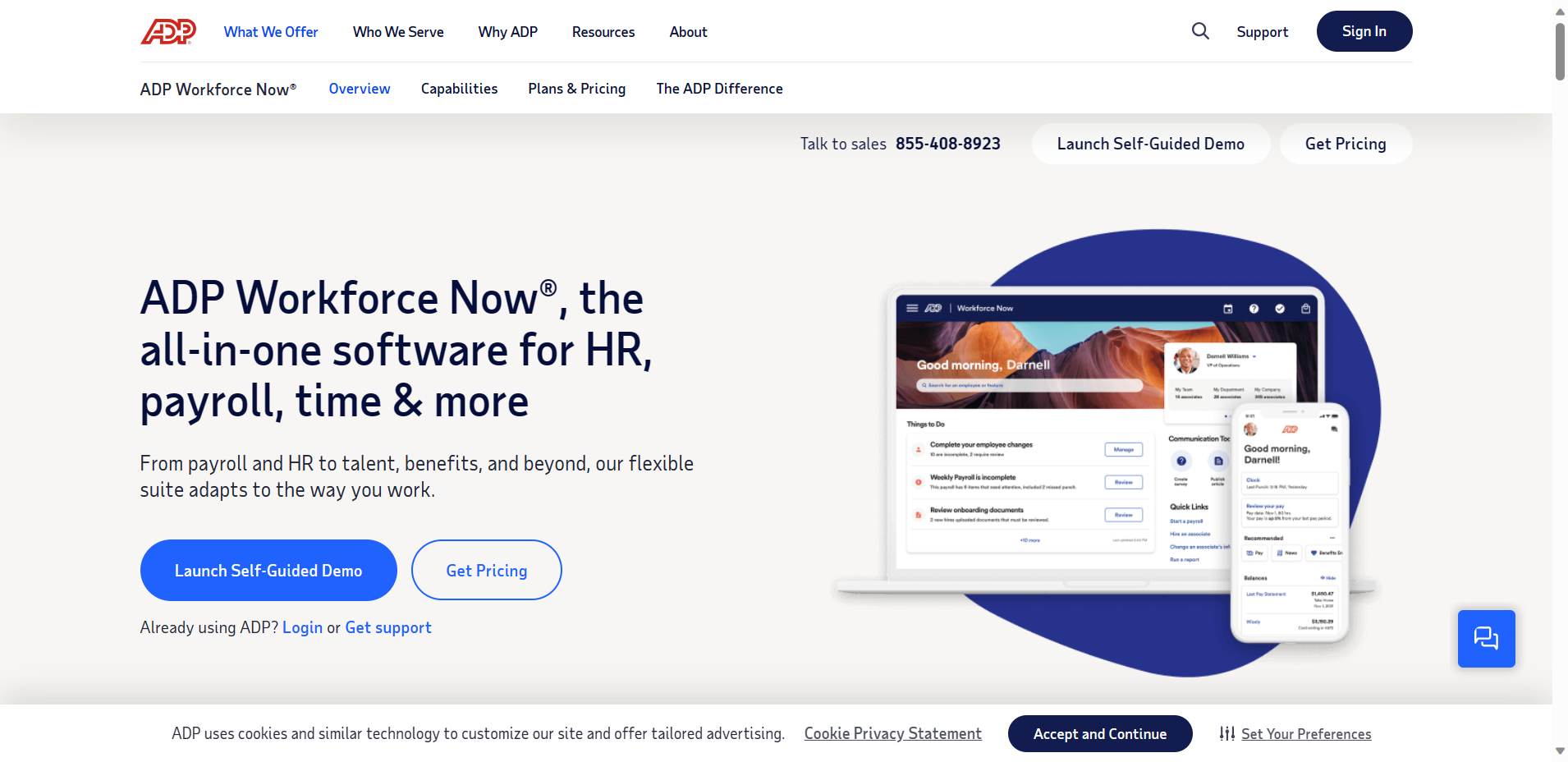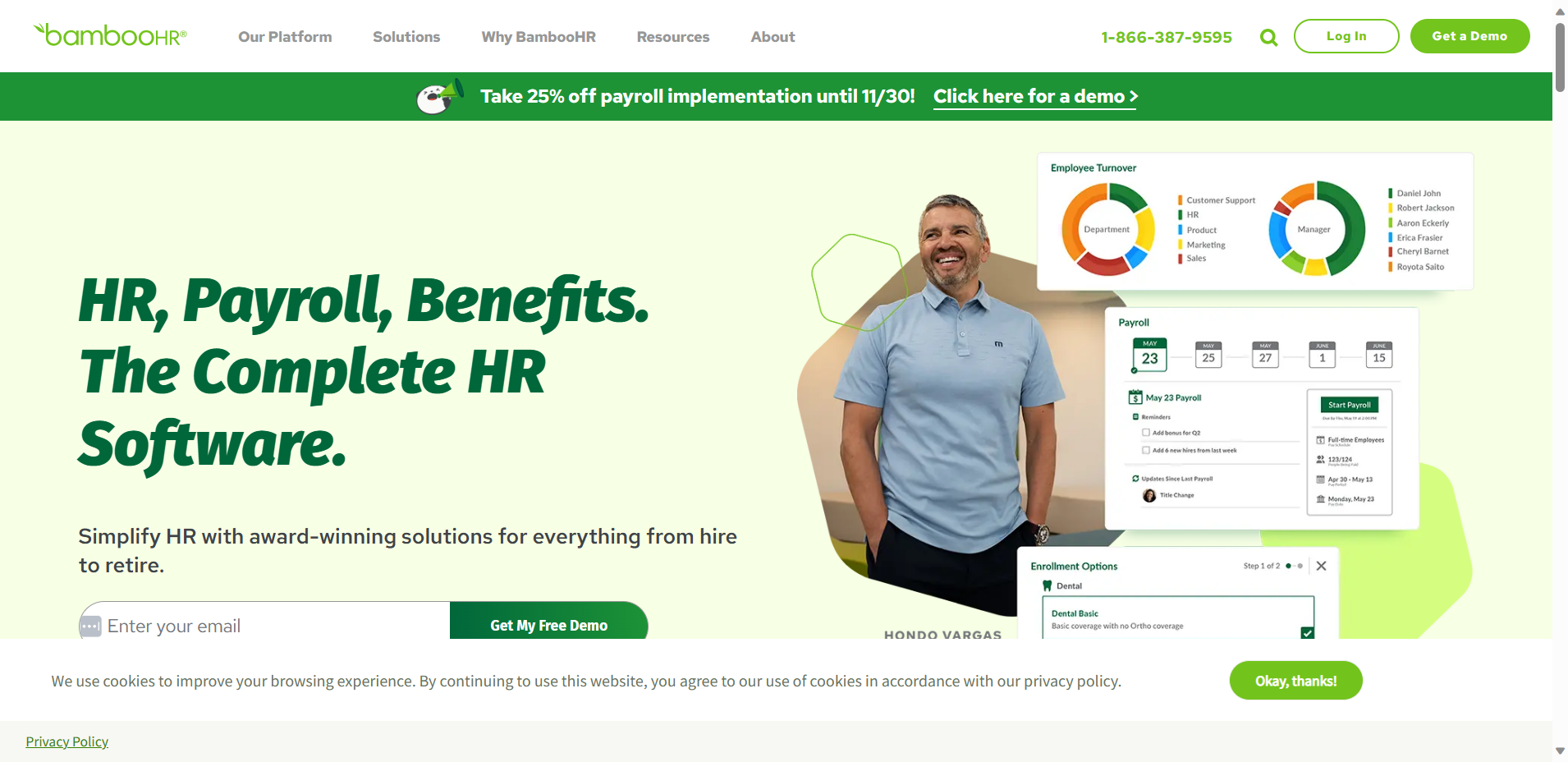Practical HR and recruiting software is vital to streamline and optimize the hiring process in modern business operations. As companies continue to compete for top talent, the need for advanced HR technology has become more pronounced.
The landscape of HR software is dynamic and constantly evolving. With artificial intelligence and automation advancements, businesses can leverage sophisticated tools to attract, evaluate, and hire the most qualified candidates. These software solutions not only save time and resources but also greatly enhance the overall candidate experience.
Gone are the days of manually managing stacks of resumes and scheduling interviews through spreadsheets. Today's HR software solutions offer functionalities such as video interviews, talent pools, and collaborative hiring, empowering businesses to efficiently source and engage potential candidates.
Moreover, HR software goes beyond the recruiting process. It encompasses talent management, employee onboarding tools, attendance and task management, team collaboration, and more. These robust features enable HR professionals to streamline the entire employee lifecycle, from recruitment to retention.
Top 5 HR & Recruiting Software
HR and recruiting software has become essential for businesses of all sizes to streamline their hiring process and find the most qualified candidates. These software solutions use artificial intelligence and advanced technology to help companies attract, assess, and hire the right talent for their organizations.
With features like job descriptions, video interviews, and talent pools, these platforms make it easier for recruiters to find potential candidates and schedule interviews. They also provide a seamless candidate experience, ensuring the recruitment process is efficient and transparent.
Moreover, HR and recruiting software offers critical features like collaborative hiring, onboarding tools, and mobile applications, making it easier for HR teams to manage employee databases and automate manual tasks. With customizable workflows and robust features, these software solutions are a digital solution for managing hiring and onboarding employees.
From small businesses to midsize enterprises, these tools offer advanced analytics and custom pricing plans to help businesses of all sizes improve their HR and recruiting operations. This article will explore the top 5 HR and recruiting software solutions offering businesses many must-have features and benefits.
1. Workday HCM
Workday is a leading cloud-based Human Capital Management (HCM) solution that provides a comprehensive range of features and capabilities to streamline and improve HR processes. With a user-friendly interface and scalable infrastructure, Workday is designed to meet the needs of both small businesses and large enterprises.

One of the key features of Workday is its recruitment module, which allows organizations to manage the hiring process efficiently. From creating and posting job descriptions to tracking and managing candidate applications, Workday offers a seamless and intuitive experience. Workday's talent management capabilities enable businesses to attract, develop, and retain top talent with performance management, learning management, and succession planning features.
Furthermore, Workday offers robust payroll, compensation management, and workforce planning capabilities. By automating manual tasks and providing advanced analytics, Workday enables businesses to make data-driven decisions and optimize their HR strategies.
With its cloud-based architecture, Workday ensures that organizations can access their HR data anytime, anywhere, and from any device, providing flexibility and convenience. Whether managing the recruitment process or implementing effective talent management strategies, Workday's user-friendly interface and scalable infrastructure make it an ideal choice for organizations looking to elevate their HR capabilities.
Key Features
1. Talent Management: Workday HCM provides robust talent management capabilities that enable organizations to attract, nurture, and retain top talent. With features like performance management, learning management, and succession planning, businesses can effectively develop and engage their workforce. The system allows managers to identify high-potential employees and create personalized development plans quickly.
2. Analytics and Reporting: Workday HCM offers advanced analytics and reporting capabilities, providing organizations with valuable insights into their HR data. With customizable dashboards and pre-built reports, users can easily access key metrics and trends, helping them make data-driven decisions. Workday's analytics also offers predictive capabilities, allowing businesses to identify potential issues and take proactive measures proactively.
3. Self-Service Portal and Mobile Application: Workday HCM provides a user-friendly self-service portal and a mobile application, enhancing employee experience and productivity. Employees can access their personal information, manage time off requests, view payslips, and update their profiles conveniently. The mobile application allows employees to perform these tasks on the go, ensuring that HR processes are accessible anytime, anywhere.
| Pros | Cons |
|---|---|
|
|
2. Oracle HCM Cloud
Oracle HCM Cloud is a comprehensive suite of applications designed to streamline and optimize HR and talent management processes. With its robust features and advanced capabilities, Oracle HCM Cloud is a top choice for organizations looking to enhance their HR operations.

One of the critical highlights of Oracle HCM Cloud is its powerful HR functionality. The system offers a range of features, including employee database management, attendance tracking, and task management. With these tools, businesses can efficiently manage their workforce, track employee performance, and automate manual tasks.
In addition to HR management, Oracle HCM Cloud excels in talent management. The platform offers advanced recruitment management, candidate sourcing, and interview scheduling features. With Oracle HCM Cloud, organizations can attract qualified candidates, create customizable workflows, and seamlessly manage the recruitment process.
Furthermore, Oracle HCM Cloud provides workforce management functionalities such as time tracking, scheduling, and attendance management. These features enable organizations to optimize employee schedules, ensure compliance, and effectively manage their workforce.
Another notable aspect of Oracle HCM Cloud is its integration capabilities. The system can easily integrate with other applications and systems, allowing organizations to create a single source of truth for HR data. This integration ensures data consistency and eliminates manual data entry.
Lastly, Oracle HCM Cloud offers global scalability, making it suitable for businesses of all sizes and across various industries. The platform supports multiple languages, currencies, and regulatory requirements, allowing organizations to expand their operations globally.
Key Features
1. Advanced Talent Management: Oracle HCM Cloud's comprehensive talent management features stand out. The platform offers a robust recruitment management system that helps businesses attract and hire qualified candidates. Organizations can streamline recruitment with candidate sourcing tools and customizable workflows. Moreover, the platform enables efficient interview scheduling, ensuring a seamless candidate experience.
2. Integrated Workforce Management: A key feature of Oracle HCM Cloud is its integrated workforce management functionalities. This includes time tracking, scheduling, and attendance management. Organizations can enhance workforce productivity and cost-efficiency by optimizing employee schedules and ensuring compliance with labor regulations. Additionally, the platform offers task management tools, enabling HR teams to automate manual tasks and focus on strategic initiatives.
3. Seamless Integration and Scalability: Oracle HCM Cloud is designed to integrate other applications and systems seamlessly. This capability allows organizations to create a single source of truth for HR data, eliminating the need for manual data entry and ensuring data consistency across the organization. Furthermore, the platform offers global scalability, supporting multiple languages, currencies, and regulatory requirements. This makes it suitable for businesses of all sizes and industries, enabling organizations to expand their operations globally.
| Pros | Cons |
|---|---|
|
|
3. ADP Workforce Now
ADP Workforce Now is a comprehensive cloud-based solution that offers a wide range of HR functions to streamline and automate business processes. One of its key features is payroll management, allowing organizations to efficiently manage employee compensation, tax calculations, and paycheck distribution. With its intuitive interface and user-friendly tools, ADP Workforce Now simplifies the payroll process and ensures accuracy.

Another important aspect of this software is its time and attendance feature. It enables businesses to track and manage employee attendance, monitor productivity, and create accurate timesheets for payroll purposes. This functionality helps organizations optimize workforce management and minimize errors in time recording.
ADP Workforce Now offers talent management capabilities, including recruiting, onboarding, performance, and learning management. These features allow organizations to attract and hire top talent, evaluate employee performance, and provide training and development opportunities to enhance employee skills and engagement.
In addition, ADP Workforce Now provides benefits administration functionalities, allowing businesses to manage employee benefits, such as health insurance, retirement plans, and time-off policies. This enables organizations to streamline benefits enrollment, administration, and compliance processes.
Its scalability sets ADP Workforce Now apart, making it suitable for small and large businesses. It offers customizable workflows, flexible reporting, and configurable features to meet the unique needs of different organizations. With its robust and reliable infrastructure, ADP Workforce Now provides a secure and efficient HR solution for businesses of all sizes.
Key Features
1. Talent Management: ADP Workforce Now offers a comprehensive talent management solution, including recruiting, onboarding, performance management, and learning management capabilities. With the recruiting feature, businesses can attract and select top talent by creating job postings, managing candidate applications, and scheduling interviews. The onboarding feature simplifies employee onboarding by automating tasks and ensuring new hires have the necessary resources and training materials. The performance management module allows organizations to set goals, track employee progress, and conduct performance reviews.
2. Benefits Administration: ADP Workforce Now streamlines the benefits administration process by providing tools to manage employee benefits like health insurance, retirement plans, and time-off policies. This feature simplifies benefits enrollment, facilitates compliance with regulations, and helps organizations efficiently handle employee benefit-related tasks. It allows businesses to automate benefits enrollment and monitor eligibility and coverage levels, ensuring employees can access the benefits they need while minimizing administrative burden.
3. Time and Attendance Tracking: ADP Workforce Now offers robust time and attendance tracking capabilities. This feature enables businesses to accurately track and manage employee attendance, monitor productivity, and generate accurate timesheets for payroll purposes. It automates the time recording process, eliminating manual tasks and reducing errors. With real-time insights, businesses can make informed decisions regarding workforce management, ensuring optimal productivity and compliance with labor regulations.
| Pros | Cons |
|---|---|
|
|
4. BambooHR
BambooHR is a leading cloud-based HR software solution for small and medium-sized businesses. With its user-friendly interface and intuitive design, BambooHR simplifies and streamlines various HR processes for companies of all sizes.

One of the critical features of BambooHR is its applicant tracking system, which effectively allows businesses to manage the hiring process from start to finish. This feature enables organizations to create job postings, track and review candidate applications, and schedule interviews in one place.
In addition, BambooHR offers robust employee onboarding tools that automate and streamline the onboarding process. New hires can complete necessary paperwork online, access essential resources and training materials, and get up to speed quickly, saving time and effort.
Performance management is easy with BambooHR's performance tracking and goal-setting features. Companies can set performance targets, track employee progress, and conduct performance reviews within the platform, fostering employee development and engagement.
Lastly, BambooHR includes a comprehensive benefits administration module simplifying benefits enrollment and management. Employers can easily track and manage employee benefits such as health insurance, retirement plans, and time-off policies, ensuring employees can access the necessary benefits.
With its user-friendly interface, comprehensive features, and focus on simplicity, BambooHR is the ideal HR software solution for small and medium-sized businesses looking to streamline their HR processes and enhance employee management.
Key Features
1. Applicant Tracking System: BambooHR's applicant tracking system streamlines the hiring process by allowing businesses to create job postings, track candidate applications, and schedule interviews all in one place. This feature ensures companies can efficiently manage hiring processes, from attracting qualified candidates to making informed hiring decisions.
2. Employee Onboarding Tools: BambooHR offers robust employee onboarding tools that automate and streamline the onboarding process. New hires can complete necessary paperwork online, access essential resources and training materials, and get up to speed quickly. This feature saves time and effort for HR teams and new employees, ensuring a smooth organizational transition.
3. Performance Management: BambooHR makes performance management easier with its performance tracking and goal-setting features. Businesses can set performance targets, track employee progress, and conduct performance reviews all within the platform. This feature fosters employee development and engagement, allowing companies to manage and enhance their workforce's performance effectively.
| Pros | Cons |
|---|---|
|
|
5. Greenhouse
Greenhouse is a leading applicant tracking system (ATS) that provides businesses a comprehensive platform to streamline their hiring process. With Greenhouse, companies can efficiently attract, evaluate, and hire qualified candidates while ensuring a positive candidate experience.

One of the core features of Greenhouse is its job posting functionality. Businesses can easily create and publish job descriptions on multiple job boards and customize their postings to attract the right talent. This helps companies reach a wider pool of potential candidates, increasing the chances of finding the perfect fit for the role.
Greenhouse's candidate tracking feature enables HR teams to manage and organize candidate applications effectively. The platform allows for seamless communication and collaboration among hiring managers and team members, making reviewing and evaluating candidates easy. Additionally, Greenhouse offers robust reporting capabilities, providing valuable insights into the hiring process and allowing for data-driven decision-making.
Moreover, Greenhouse stands out for its flexibility and integration capabilities. The platform can integrate with various HR tools, such as background check providers, assessment providers, and HRIS systems, creating a seamless and efficient workflow. This ensures businesses can leverage their existing HR technology stack and optimize their hiring process.
Key Features
1. Job Posting Functionality: Greenhouse offers a comprehensive job posting functionality that allows businesses to create and customize job descriptions. With the ability to publish these descriptions on multiple job boards, companies can reach a wider pool of potential candidates. This feature helps attract qualified individuals and increases the chances of finding the perfect fit for the role.
2. Candidate Tracking: Greenhouse's candidate tracking feature enables HR teams to manage and organize candidate applications effectively. Hiring managers and team members can seamlessly communicate and collaborate through this feature. This makes reviewing and evaluating candidates easy, streamlining the hiring process. Additionally, Greenhouse provides robust reporting capabilities, offering valuable insights that aid in data-driven decision-making.
3. Integration Capabilities: Greenhouse stands out for its flexibility and integration capabilities. The platform can seamlessly integrate with various HR tools, including background check providers, assessment providers, and HRIS systems. This integration allows for a seamless and efficient workflow, leveraging existing HR technology and optimizing the hiring process. With Greenhouse's integration capabilities, businesses can streamline their hiring process and enhance their overall HR operations.
| Pros | Cons |
|---|---|
|
|
Considerations When Choosing HR & Recruiting Software
Several important factors must be considered when choosing the right HR and recruiting software for your organization. These considerations ensure that the software you select meets your needs and helps streamline your HR processes effectively.
Scalability is a crucial factor to evaluate. As your organization grows, you need software that can easily accommodate the increasing number of employees and candidates. Look for software that offers flexible pricing plans and can handle large amounts of data without compromising performance.
User experience is also crucial. The software should be intuitive and user-friendly, allowing HR teams and hiring managers to navigate the system quickly. This will save time and reduce the learning curve for new users.
Integration capabilities are another critical consideration. HR software should seamlessly integrate with your existing HR systems, such as applicant tracking or payroll software. This ensures a smooth data flow between systems, avoiding the need for manual data entry and reducing the risk of errors.
Industry-specific needs should also be taken into account. Different industries have unique HR requirements and compliance regulations. Choose software that addresses these specific needs and provides industry-specific features and functionalities.
By considering factors such as scalability, user experience, integration capabilities, and industry-specific needs, you can decide when to choose HR and recruiting software that will effectively support your organization's HR processes.
Recent Developments And Trends
Recent developments in the HR software industry have seen a significant shift towards automation and artificial intelligence (AI). To streamline the hiring process, AI-powered software is now used to analyze large volumes of resumes and identify qualified candidates more efficiently. This technology is also used for video interviews, saving candidates and hiring teams time and resources.
Another notable development is the focus on candidate experience. HR software is now designed to provide job seekers with a seamless and user-friendly interface. Features such as self-service portals and mobile applications enable candidates to apply for positions and track their progress throughout recruitment easily.
Trends shaping the future of HR and recruiting technology include integrating talent management and onboarding tools. By combining these functionalities, organizations can effectively manage their talent pools and ensure a smooth transition from the recruitment phase to employee onboarding.
Additionally, customization and scalability are becoming critical requirements for HR software. Businesses of all sizes now demand software tailored to their needs and can handle data growth as the organization expands.
These recent developments and trends in the HR software industry aim to enhance efficiency, improve candidate experience, and support overall HR functions within organizations.
Final Word
The HR and recruiting software industry is continuously evolving to meet the changing needs of businesses. Key trends include a focus on candidate experience, talent management and onboarding tool integration, and customization and scalability.
To make the most of these advancements, businesses must carefully evaluate their HR software needs and choose a solution that aligns with their goals. It is important to consider features such as self-service portals, mobile applications, and customizable workflows to enhance the recruitment process and improve candidate experience. Additionally, integrating talent management and onboarding tools can ensure a seamless transition from recruitment to employee onboarding.
Overall, investing in reliable and user-friendly HR and recruiting software is crucial for businesses of all sizes. Organizations can optimize their hiring process, create a positive candidate experience, and drive talent management and employee onboarding success by staying updated with the latest trends and selecting a software solution that meets their needs.
Frequently Asked Questions
What is HR & Recruiting software, and what does it do?
HR & Recruiting software is a digital solution designed to streamline and automate various HR and recruitment processes. It helps organizations manage the entire talent acquisition lifecycle, from job posting and candidate sourcing to applicant tracking and onboarding.
What are the key features of HR & Recruiting software?
Some key features of HR & Recruiting software include job description management, candidate sourcing and screening, interview scheduling (including video interviews), talent pool management, collaborative hiring tools, and onboarding tools.
How can HR & Recruiting software improve the candidate experience?
HR & Recruiting software helps improve the candidate experience by providing a self-service portal for job applications, allowing for easy communication and feedback, and ensuring the hiring process is transparent and efficient.
Can HR & Recruiting software be customized to fit specific workflows and company needs?
Many HR & Recruiting software providers offer customizable workflows, allowing businesses to configure the software based on their unique requirements. This ensures that the software aligns with the company's existing processes and enhances productivity.
Is HR & Recruiting software suitable for small and midsize businesses?
Yes, HR & Recruiting software can benefit businesses of all sizes, including small and midsize organizations. It helps to automate manual tasks, improve team collaboration, and enhance overall efficiency in managing HR and recruitment processes.
How can HR & Recruiting software contribute to employee management and team productivity?
HR & Recruiting software offers features such as attendance management, task management, team collaboration tools, and employee database management. These features help streamline various HR and administrative tasks, improve team communication, and increase productivity.






